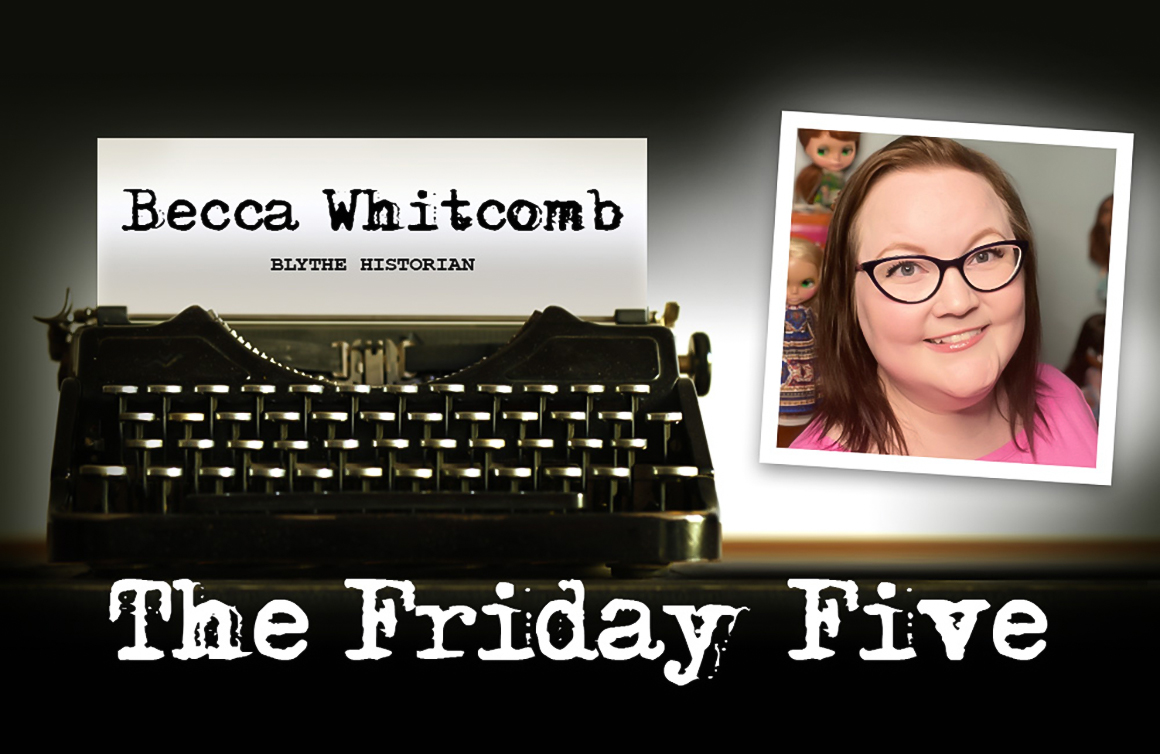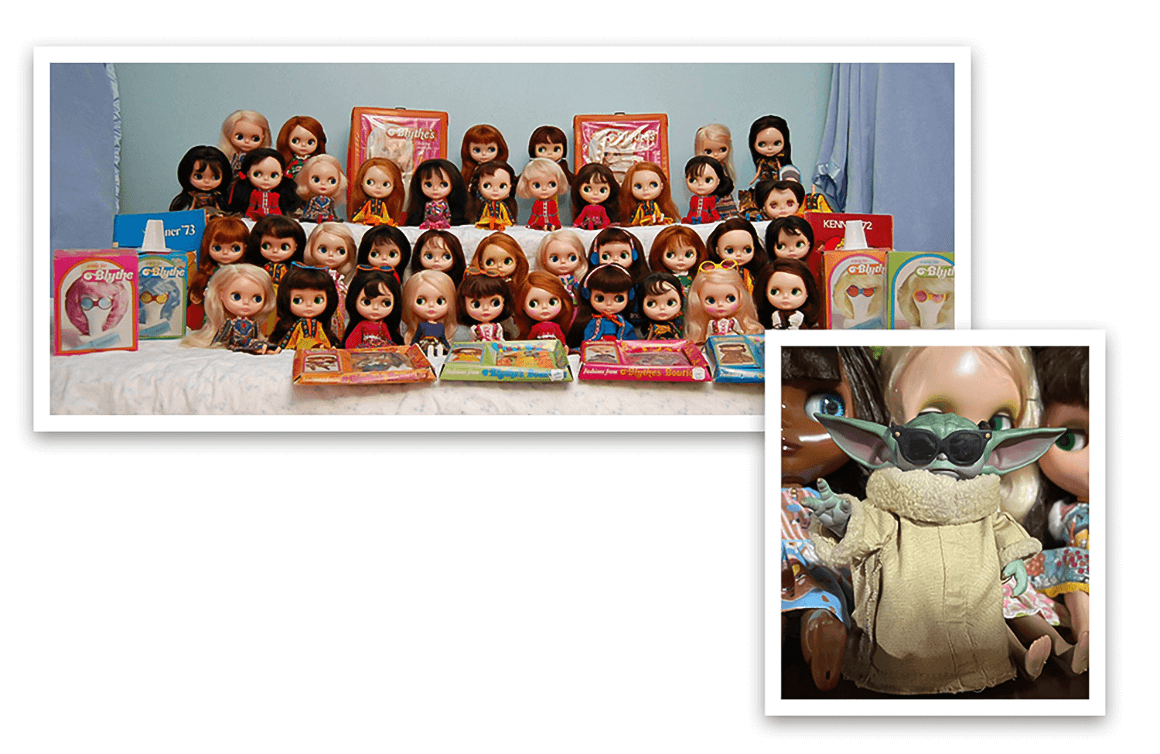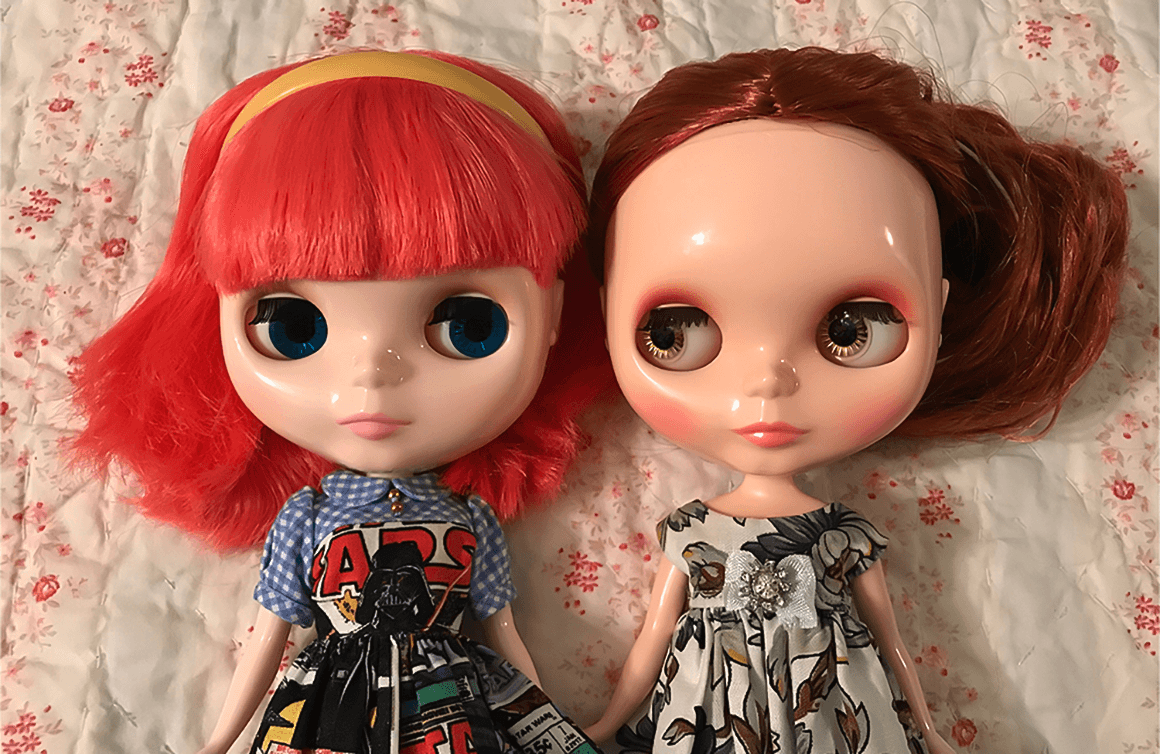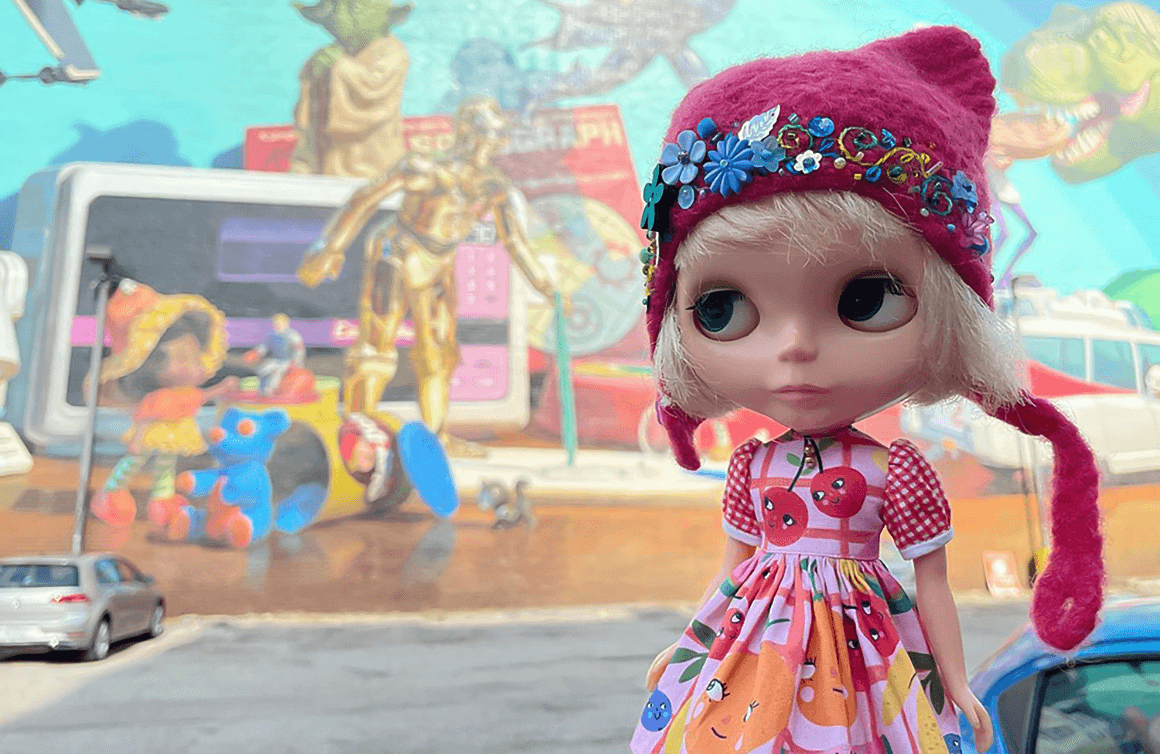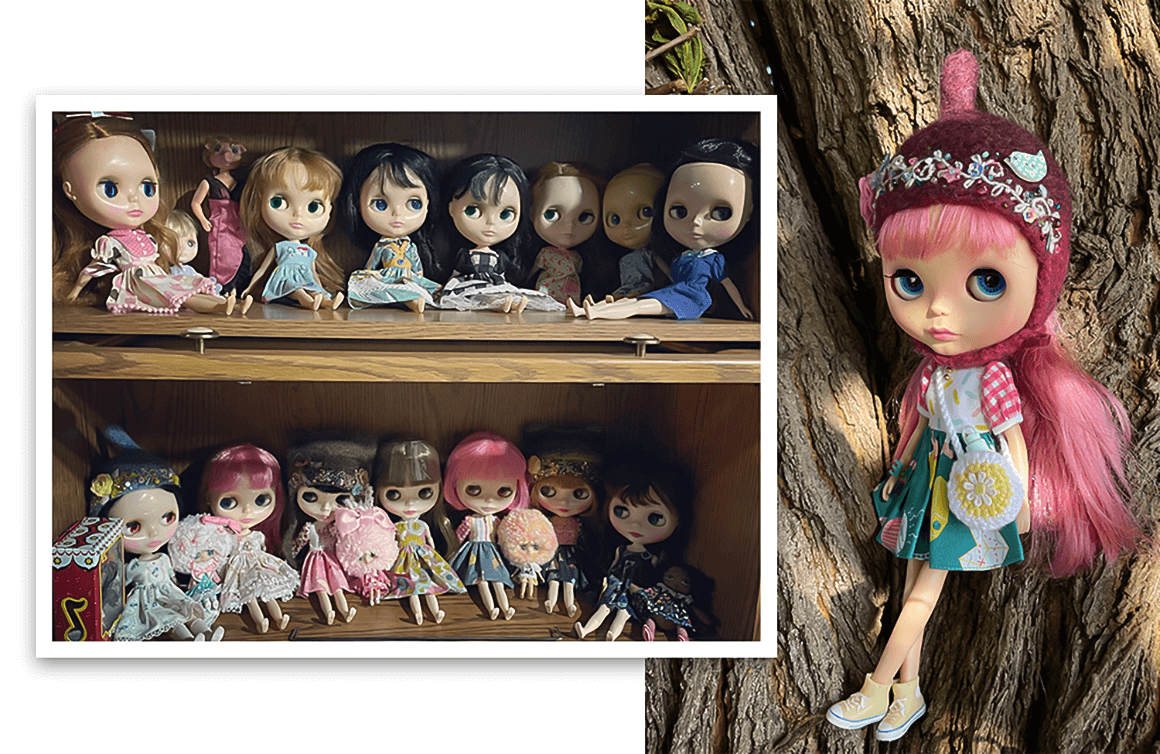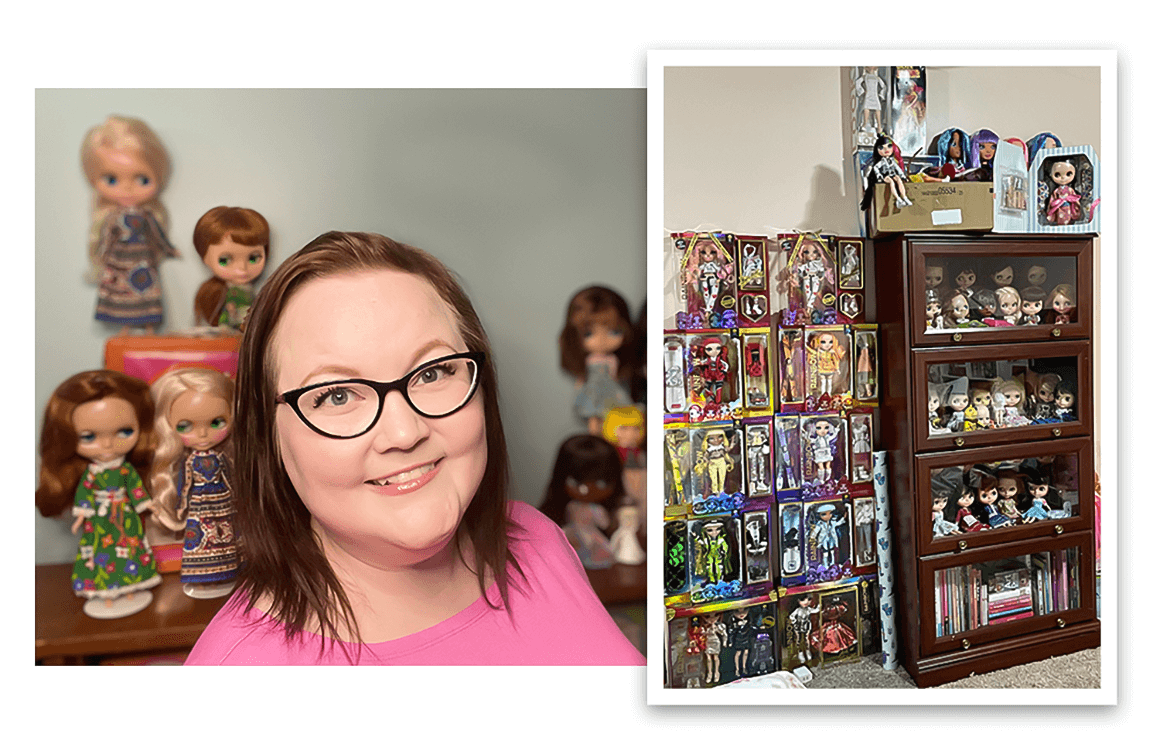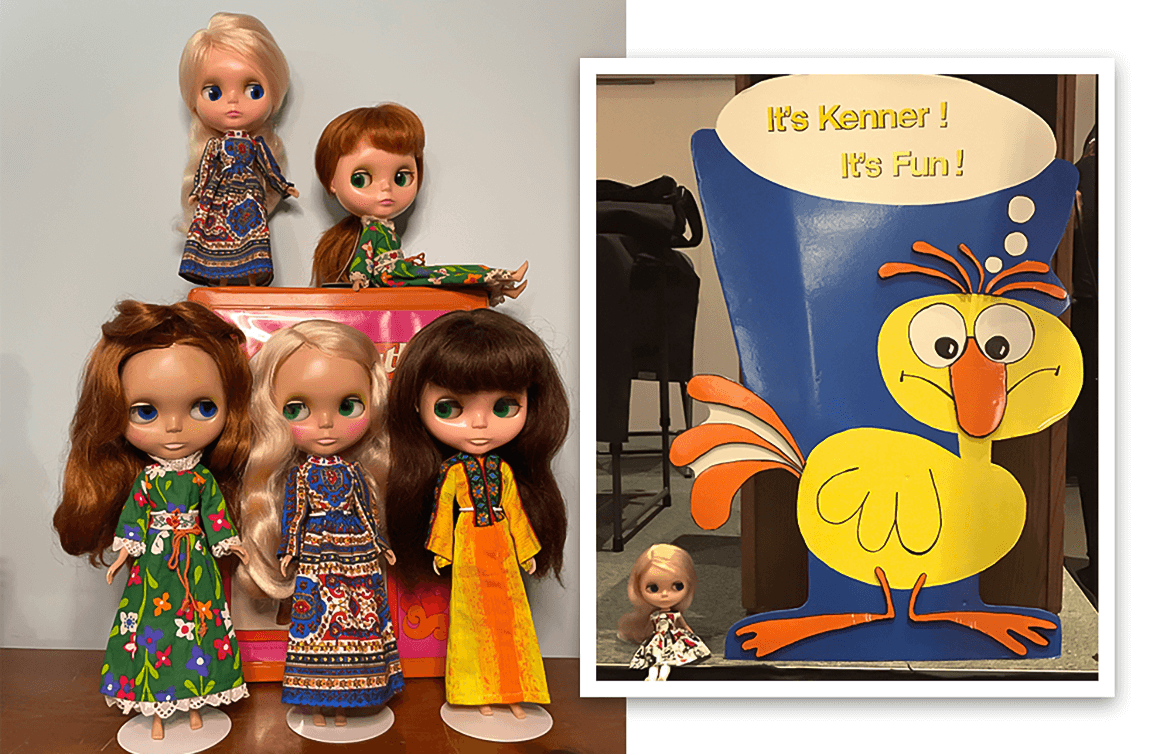Who is Blythe?
She’s kind of a cult phenomenon.
Blythe was a doll originally invented by Alison Katzman and produced by Kenner in 1972. Eight dolls with four different hair colours were released — blonde, red, brunette, and raven. Only one edition of the blonde- and raven-haired dolls were available. The red-haired and brunette dolls each had three variants.
Katzman stated that with Blythe, she was trying to create a fashion doll to compete with Barbie. She took inspiration from Betty Boop and also from her own daughter, who had returned home one day with contact lenses that were the wrong colour. That was the inspiration behind Blythe’s changing eye colour.
Blythe was featured in a Kenner catalogue advertisement in Gold Key comic books in 1972. It’s a really cute ad with some great artwork. They were also promoted in two different television commercials, toy catalogues, and a mini toy catalogue in an issue of Good Housekeeping. Advertising seemed slim. The line had a short lifespan, unfortunately. My mom, who was in her youth when the dolls were first released, says she had never heard of them or noticed them in the stores.
They didn’t sell well, and kids at the time thought they were a bit creepy.

What’s your personal history with Blythe dolls?
I discovered Blythe in 2007. I saw a photo of one of the dolls and thought they were the coolest thing I’d ever seen. I asked my mom — who collects Barbie and Cabbage Patch Kids dolls — if I could have one. She agreed but thought they were a little weird. I think she was a bit surprised that I wanted one.
The vintage Kenner dolls were much cheaper at that time. I got my first one and was hooked. I thought they were absolutely fascinating. I love the modern version of the dolls also but there’s a different charm to the vintage dolls.
Beginning in 2001, Takara worked with a company called Cross World Connections (CWC) that has the rights from Hasbro to produce the dolls. Takara made Blythe dolls for about 20 years. Then in 2022, CWC switched to Good Smile Company to produce the dolls.
Other companies have made the dolls as well. In the United States, Ashton-Drake Galleries made a line of reproduction dolls based on the originals. There have also been petite dolls made by Takara and Littlest Pet Shop. The Littlest Pet Shop animated series also featured a character based on a Blythe doll.
My personal collection of Blythe dolls includes about 92 Kenner dolls, but I have hundreds of Blythe dolls of different sizes from various manufacturers.

You established the Kenner Blythe Guide website. What motivated you to document the history of the line?
Years ago there was a website and forum run by Gina Garan, who also released a book of photography titled This Is Blythe in 2000. Gina helped get the ball rolling on the modern dolls. The forum included a section about the original Kenner line and its history. It included all sorts of really valuable information. Unfortunately, over time, the forum died out and eventually disappeared.
I was obsessed with learning whatever I could and gathering knowledge about the dolls. I found it fascinating. That knowledge needed to be documented, but there was a hole in the community. Now there’s a resource.

Why do you think Blythe has emerged as a collectible and gained an audience in new generations?
Blythe appeals to many people for many different reasons.
I’m particularly focused on the history of Blythe and the vintage dolls. Some collectors prefer the newer dolls or like the customized dolls and focus on sewing, miniature making, or photography. I’ve heard many people say they got into collecting because of the photography. She has a ton of character — especially the dolls with the changeable eyes. There’s so much personality.
Blythe can be such a muse in so many different ways.

What words of wisdom would you like to share with Blythe enthusiasts?
Collect what you love.
Sometimes you’ll see people cycle through stock dolls until they get bored and move on to customs or vice versa. There are so many different dolls and different aspects of collecting that you can collect in different ways. Go for whatever you love and run with it.
Many factors go into the price you’ll pay for Blythe. Dolls can generally be found for around $100 to $150, but there are custom dolls that can go into the thousands of dollars. I’ve seen customs that cost more than the original vintage Kenner Blythe dolls.
The rarity of the dolls plays a part in the price. Some customizers don’t make a ton of dolls and are really respected within the community. Others take the doll apart, remove the makeup, and create a completely different look with touches such as faint little veins and other realistic features. They have their own style. I am really picky with customs. I can appreciate them. Most of the customs are created from newer or counterfeit dolls. They aren’t customizing original vintage dolls quite as much.
I occasionally see mint-in-box original Kenner dolls pop up on eBay. People do have them, it’s just a matter of how much money you want to spend. I think that’s something that can be intimidating about Blythe — everything looks expensive, and there are a ton of different face molds and manufacturers. They can be expensive. New collectors can’t always figure out why.
If you look around, there are absolutely great dolls. I’ve found dolls for wonderful prices that are beyond fair. It’s possible, but it takes a little bit more digging and patience.

Delve into the world of the original Blythe dolls at the Kenner Blythe Guide and contemporary dolls at The Blythe Guide websites. You can also read Toy Tales’ previous coverage of Blythe.

